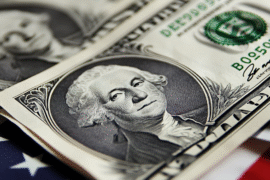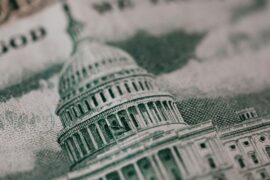This article may contain references to products or services from one or more of our advertisers or partners. We may receive compensation when you click on links to those products or services. Nonetheless, our opinions are our own.
The information presented in this article is accurate to the best of our knowledge at the time of publication. However, information is subject to change, and no guarantees are made about the continued accuracy or completeness of this content after its publication date.
When you face an unexpected expense, it may seem like a rapid payday loan could be the answer to your financial woes. After all, who wouldn’t want $1,000 in their hands right away to cover bills, car repairs, or medical emergencies? However, it’s crucial to understand the actual cost of that simple solution before making any commitments.
We’ll explore the true financial implications of a $1,000 payday loan—from astronomical interest rates to hidden fees—and the long-term effects it may have on your wallet. Making an informed decision could be the difference between temporary relief and lasting financial burden.
Understanding the True Cost of a $1,000 Payday Loan
When considering a $1,000 payday loan, you must look beyond the initial amount you receive. The fees and interest rates can add up quickly, often leading to a much larger financial obligation than you expected. Typically, payday loans come with an Annual Percentage Rate (APR) exceeding 400%, meaning that the cost can balloon significantly by the time you repay the loan.
To illustrate, let’s break down a hypothetical scenario:
| Item | Amount |
|---|---|
| Loan Amount | $1,000 |
| Typical Repayment Fee (15%) | $150 |
| Total Due | $1,150 |
| APR (Approximate) | 390%+ |
As you can see, repaying a $1,000 loan can cost you an additional $150 or more, even under typical payback terms. But beyond this immediate cost, consider the following risks:
- Inability to Pay—If you cannot repay the loan on time, rolling it over will result in even higher fees.
- Impact on Credit Score—Late or missed payments can negatively affect your credit rating, making future borrowing more expensive.
- Financial Strain—The pressure of repaying high-interest loans can lead to further economic distress, creating a cycle of borrowing.
Understanding these costs prepares you for repayment and empowers you to consider alternative financial solutions that may serve you better in the long run.
Breaking Down Fees and Interest Rates That Add Up Fast
Getting a $1,000 payday loan entails substantial expenses that can swiftly become unmanageable. Here’s a closer look at the two major components:
- Interest Rates—Payday loans typically carry high interest rates, often exceeding 300%-400% APR. If you’re unable to repay on time, you might need to borrow again, leading to even more interest charges.
- Fees—Lenders may charge additional costs such as processing fees, late payment penalties, or insufficient funds fees if your payment bounces.
Here’s how these costs can escalate based on different interest rates:
| Loan Amount | Interest Rate (Monthly) | Total Cost After 30 Days |
|---|---|---|
| $1,000 | 15% | $1,150 |
| $1,000 | 25% | $1,250 |
| $1,000 | 50% | $1,500 |
As shown above, the costs can add up fast depending on the lender’s terms. That’s why evaluating all options is crucial—emergency funds or assistance programs may offer a more sustainable solution without these extreme costs.
Voted "Best Overall Budgeting App" by Forbes and WSJ
Monarch Money helps you budget, track spending, set goals, and plan your financial future—all in one app.
Get 50% OFF your first year with code MONARCHVIP
The Impact on Your Budget and Financial Health
A payday loan may seem like a quick fix for a financial crunch, but it can have serious long-term repercussions.
When you borrow from a payday lender, you’re not just getting cash—you’re committing to a high-cost repayment structure that can harm your financial health. Payday loans frequently exceed 300% APR, meaning you could pay hundreds of dollars more than you borrowed in a stint.
If you miss a payment or rollover your loan, fees can accumulate rapidly, leading to more significant financial strain. Consider these possible impacts:
- Depleted Savings—The funds you hoped would stabilize your situation may instead wipe out your emergency savings.
- Increased Debt—High-interest loans can make it difficult to escape the cycle of debt.
- Credit Score Damage—Late payments can leave negative marks on your credit report, affecting future borrowing opportunities.
Here’s an example of how a payday loan repayment can escalate over time:
| Month | Repayment Amount | Total Cost |
|---|---|---|
| 1 | $1,200 | $1,200 |
| 2 | $1,400 | $2,600 |
| 3 | $1,650 | $4,250 |
What started as a $1,000 loan can quickly become a financial burden, making it crucial to weigh the risks carefully before borrowing.
Alternatives to Consider Before Taking Out a Payday Loan
Instead of rushing into a payday loan, consider these less expensive alternatives:
- Credit Union Loans—Many credit unions offer small, low-interest loans with more manageable repayment terms.
- Personal Loans from Banks—If you have a decent credit score, banks may offer personal loans with lower interest rates than payday lenders.
- Payment Plans—Speak to creditors about setting up a structured payment plan rather than risking high fees from payday loans.
- Side Gig or Freelancing—Consider earning extra income through gig work to cover urgent expenses.
- Financial Assistance Programs—Some local charities or government programs provide emergency financial aid.
Here’s a comparison of payday loans vs. alternative loan options:
| Loan Type | Interest Rate (APR) | Loan Duration |
|---|---|---|
| Payday Loan | 400%+ | 2 weeks |
| Credit Union Loan | 10-18% | 6 months – 2 years |
| Personal Bank Loan | 5-30% | 1-5 years |
By considering these alternatives, you can make a more informed financial decision that leads to stability rather than a debt cycle.
Taking Control of Your Financial Future
Avoiding payday loans starts with smart financial habits. Here are steps you can take today:
- Budget Wisely—Track income and expenses to find areas to cut back.
- Build an Emergency Fund—Aim to save three to six months’ worth of expenses for financial security.
- Explore Alternative Financing—Look into personal loans or credit union options with better terms.
- Prioritize Debt Repayment—Pay off high-interest loans first to reduce financial strain.
Here’s a simple cost comparison:
| Type of Loan | Loan Amount | Repayment Period | Total Repayment |
|---|---|---|---|
| Payday Loan | $1,000 | 2 weeks | $1,500+ |
| Personal Loan | $1,000 | 12 months | $1,100 |
As you can see, payday loans lead to significantly higher costs. By planning ahead, you can avoid the debt trap and build a stronger financial future.
Final Thoughts
A payday loan may seem like a quick solution, but the high costs and risks often outweigh the benefits. Before borrowing, consider all available alternatives and take proactive steps to strengthen your financial security. Making informed decisions today will help you build a more stable and debt-free future.

Reviewed and edited by Albert Fang.
See a typo or want to suggest an edit/revision to the content? Use the contact us form to provide feedback.
At FangWallet, we value editorial integrity and open collaboration in curating quality content for readers to enjoy. Much appreciated for the assist.
Did you like our article and find it insightful? We encourage sharing the article link with family and friends to benefit as well - better yet, sharing on social media. Thank you for the support! 🍉
Article Title: The Real Cost of a ,000 Payday Loan
https://fangwallet.com/2025/02/20/the-real-cost-of-a-1000-payday-loan/The FangWallet Promise
FangWallet is an editorially independent resource - founded on breaking down challenging financial concepts for anyone to understand since 2014. While we adhere to editorial integrity, note that this post may contain references to products from our partners.
The FangWallet promise is always to have your best interest in mind and be transparent and honest about the financial picture.
Become an Insider

Subscribe to get a free daily budget planner printable to help get your money on track!
Make passive money the right way. No spam.
Editorial Disclaimer: The editorial content on this page is not provided by any of the companies mentioned. The opinions expressed here are the author's alone.
The content of this website is for informational purposes only and does not represent investment advice, or an offer or solicitation to buy or sell any security, investment, or product. Investors are encouraged to do their own due diligence, and, if necessary, consult professional advising before making any investment decisions. Investing involves a high degree of risk, and financial losses may occur including the potential loss of principal.
Source Citation References:
+ Inspo












































